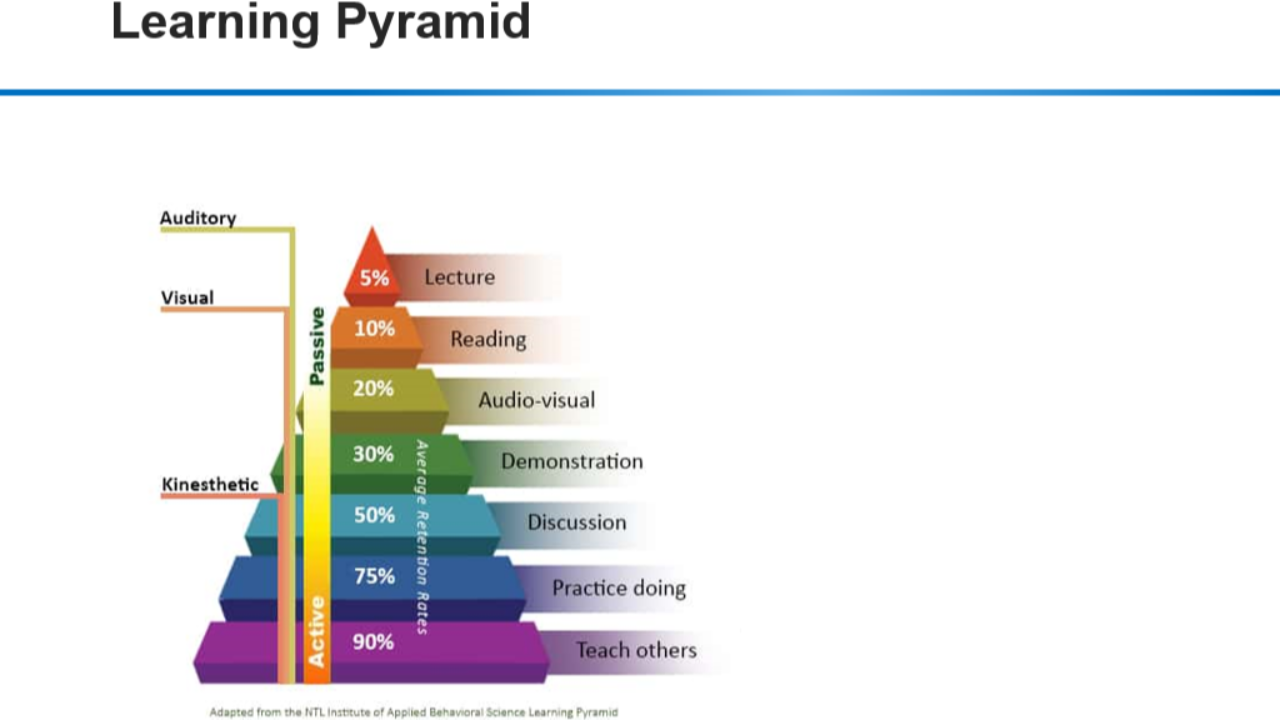
Master the Learning Pyramid for Faster Self-Development

Mastering effective learning is the key to self-development and growth. When you understand the principles behind the Learning Pyramid, you can enhance your skills, improve learning efficiency, and achieve continuous improvement. Active learning plays a pivotal role in this process, helping you transform your approach to learning, making it more impactful and sustainable. This blog will guide you on how to implement the Learning Pyramid for faster self-development and achieve transformational growth.
What is the Learning Pyramid?
The Learning Pyramid is a model that ranks different learning methods by their effectiveness in helping people retain information. At the base, passive methods like reading and lectures are less effective, while at the top, active learning techniques such as teaching others and hands-on experiences deliver the highest retention rates. Understanding this pyramid allows you to prioritize activities that enhance skill development and ensure continuous improvement.
Skill Enhancement Building the Foundation for Growth
Skill enhancement is a vital aspect of any learning journey. By engaging in active learning, you challenge your brain to retain more information. Rather than simply listening to a lecture or reading a textbook, engaging with the material through discussion, problem-solving, or hands-on practice is far more effective. These active methods stimulate deeper cognitive processes, leading to better retention and application of new skills.
Incorporating techniques like group discussions, case studies, and role-playing will help you actively engage with the material, boosting your skillset faster than traditional methods. Remember, transformational growth requires deliberate practice and a consistent effort to engage in these advanced learning methods.
Learning Efficiency Do More with Less
Learning efficiency is about getting the most out of your study or training time. The Learning Pyramid emphasizes the value of active learning in improving this efficiency. Passive activities such as reading, while useful, may not lead to the deep understanding that active methods do. By applying active learning techniques, like summarizing information, teaching what you've learned, and experimenting with concepts, you can speed up your learning process.
This focused approach ensures that you are not just absorbing information but truly understanding and internalizing it, which is essential for learning efficiency. This efficiency helps you achieve faster self-development, enabling you to progress through new concepts and skills at an accelerated pace.
Continuous Improvement The Key to Long-Term Success
The concept of continuous improvement, also known as "kaizen," is deeply embedded in the Learning Pyramid. To continuously improve, you must reflect on your learning processes, identify areas for growth, and make incremental adjustments. Active learning helps in this process, as it encourages constant feedback, evaluation, and self-correction. By engaging in hands-on experiences and regularly assessing your progress, you ensure that your learning journey is always moving forward.
The Learning Pyramid advocates for a steady rhythm of learning and improvement. As you practice new skills, review and refine them, and receive feedback from others, you pave the way for sustained growth. This ensures that your self-development journey is not static but continually evolving toward mastery.
Active Learning: The Game Changer
Active learning is the cornerstone of the Learning Pyramid. Unlike passive methods, it involves actively engaging with the material through activities such as discussions, problem-solving, teaching, or applying the knowledge. This hands-on approach ensures that learners are not just recipients of information but active participants in their education.
Active learning leads to better understanding and retention, especially when you teach others what you’ve learned or apply your new skills in real-world scenarios. The more you interact with the material, the better your chances of mastering it. This is where you can truly witness transformational growth, as active learning accelerates the entire learning process.
Transformational Growth Unlocking Your Full Potential
Transformational growth occurs when learning becomes a continuous, self-driven process. It’s the ability to adapt, evolve, and apply new skills in various contexts. By using the Learning Pyramid as a guide, you can accelerate this growth. Active learning promotes a shift from surface-level understanding to deep, transformative insights. As you progress from basic knowledge to mastery, you build a foundation that allows for growth in all areas of life, not just in professional skills.
The pyramid encourages you to engage in learning experiences that are both challenging and rewarding. Through consistent practice, reflection, and feedback, you unlock your potential, achieve self-development, and create lasting change in your life.
Conclusion
Mastering the Learning Pyramid in action is the ultimate approach to faster self-development. By focusing on active learning, skill enhancement, and continuous improvement, you set yourself up for transformational growth. Implementing the techniques in this pyramid allows you to not only learn efficiently but also deeply understand and apply new concepts. Embrace the power of effective learning today and begin your journey to achieving lasting success.
FAQs
1. What are the benefits of active learning?
Active learning leads to better retention, deeper understanding, and faster skill development. It encourages engagement and real-world application.
2. How can I improve my learning efficiency?
Focus on active learning techniques, such as summarizing, teaching, and applying knowledge, to boost your learning efficiency and retention.
3. What is transformational growth in learning?
Transformational growth occurs when learning leads to lasting change, deeper understanding, and mastery of new skills, helping you unlock your full potential.


